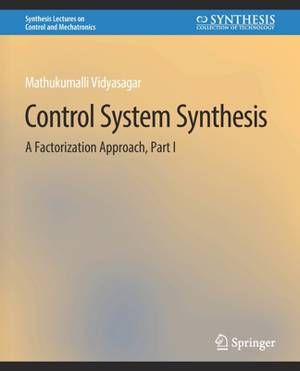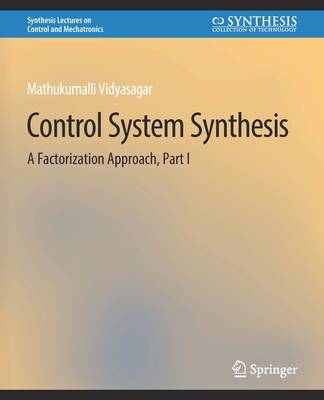
- Retrait gratuit dans votre magasin Club
- 7.000.000 titres dans notre catalogue
- Payer en toute sécurité
- Toujours un magasin près de chez vous
- Retrait gratuit dans votre magasin Club
- 7.000.0000 titres dans notre catalogue
- Payer en toute sécurité
- Toujours un magasin près de chez vous
52,95 €
+ 105 points
Format
Description
This book introduces the so-called ""stable factorization approach"" to the synthesis of feedback controllers for linear control systems. The key to this approach is to view the multi-input, multi-output (MIMO) plant for which one wishes to design a controller as a matrix over the fraction field F associated with a commutative ring with identity, denoted by R, which also has no divisors of zero. In this setting, the set of single-input, single-output (SISO) stable control systems is precisely the ring R, while the set of stable MIMO control systems is the set of matrices whose elements all belong to R. The set of unstable, meaning not necessarily stable, control systems is then taken to be the field of fractions F associated with R in the SISO case, and the set of matrices with elements in F in the MIMO case. The central notion introduced in the book is that, in most situations of practical interest, every matrix P whose elements belong to F can be ""factored"" as a ""ratio"" of two matrices N, D whose elements belong to R, in such a way that N, D are coprime. In the familiar case where the ring R corresponds to the set of bounded-input, bounded-output (BIBO)-stable rational transfer functions, coprimeness is equivalent to two functions not having any common zeros in the closed right half-plane including infinity. However, the notion of coprimeness extends readily to discrete-time systems, distributed-parameter systems in both the continuous- as well as discrete-time domains, and to multi-dimensional systems. Thus the stable factorization approach enables one to capture all these situations within a common framework. The key result in the stable factorization approach is the parametrization of all controllers that stabilize a given plant. It is shown that the set of all stabilizing controllers can be parametrized by a single parameter R, whose elements all belong to R. Moreover, every transfer matrix in the closed-loop system is an affine function of the design parameter R. Thus problems of reliable stabilization, disturbance rejection, robust stabilization etc. can all be formulated in terms of choosing an appropriate R. This is a reprint of the book Control System Synthesis: A Factorization Approach originally published by M.I.T. Press in 1985. Table of Contents: Introduction / Proper Stable Rational Functions / Scalar Systems: An Introduction / Matrix Rings / Stabilization
Spécifications
Parties prenantes
- Auteur(s) :
- Editeur:
Contenu
- Nombre de pages :
- 166
- Langue:
- Anglais
- Collection :
Caractéristiques
- EAN:
- 9783031007002
- Date de parution :
- 20-06-11
- Format:
- Livre broché
- Format numérique:
- Trade paperback (VS)
- Dimensions :
- 190 mm x 235 mm
- Poids :
- 331 g

Les avis
Nous publions uniquement les avis qui respectent les conditions requises. Consultez nos conditions pour les avis.






